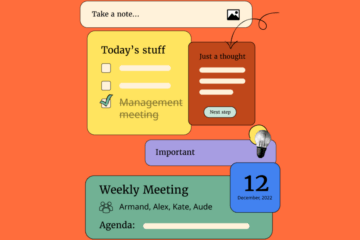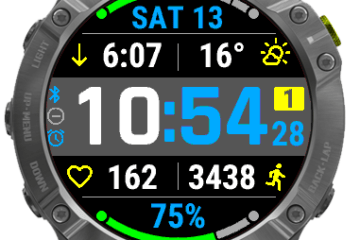
Two new app stores were introduced to the rapidly growing app market last week — Google added an app store to the latest developer preview for Android Wear 2.0, and HTC unveiled Viveport for its VR headset, the HTC Vive.
App stores are an essential part of any app ecosystem, providing developers with a single place to house content for a specific device or platform and enabling users to discover content.
- Google is bringing an app store to Android Wear devices, according to a blog post on the Android developer page. The update, a part of the third developer preview of Android Wear 2.0, aims to make it easier for users to find and install apps directly onto their device. This will also improve the user experience, as apps running natively on Android smartwatches load faster than those running through the tethered smartphone.
- HTC is launching the Viveport app store for VR apps globally, according to VentureBeat. Viveport will highlight the content offered for the Vive headset, but it will be open, meaning it will accept titles from other platforms. Moreover, HTC will not force developers to place their apps exclusively in Viveport. Viveport joins a growing market of VR app stores, including those run by Oculus, Valve, and Samsung.
These two events highlight an increasingly complex development environment for app makers. The growing number of device categories with their own ecosystems of dedicated app stores could complicate distribution plans for developers. For example, a developer creating a mobile gaming app two years ago needed only to decide whether to support Google Play or the App Store. Today, that same developer must consider whether there are ways to make smartwatch or VR versions, or whether the product being created would yield a better ROI in any one of those three environments.
- This increasingly expanding space offers mobile app developers the opportunity to grow. But it could also hinder growth of apps in established markets — like the saturated smartphone market — as developers shift focus to emerging platforms.
- On the other hand, it could inhibit growth of dedicated content for emerging platforms like VR and smartwatches. These newer device markets don’t have historical grounds for driving meaningful monetization. Developers could opt to create content for smartphones and make minimal changes so that it’s also compatible with smartwatches and VR headsets.
Open-source platforms could mitigate some of these complications by creating a uniform developer environment for each new device category. However, this could be a while off, likely due to the need for a set standard among form factors.
The introduction of these new app stores creates new potential and new challenges for app developers, who must already contend with the noise of an overcrowded app market. There are now well over 3 million apps available across the world’s five largest app stores. Delivering the right product to the right audience at the right time in this environment is imperative to the success of any app.
The challenge of marketing an app effectively has made app-install ads — an ad unit that directs users to download a mobile app — an essential tool for developers seeking to stand out in the Google Play and Apple app stores. This is why it’s not surprising that more marketers are using paid channels to drive downloads than ever before. In fact, over 80% of respondents in a survey of the top 100 grossing mobile app developers noted they plan on increasing their spend on app-install ads in 2015.
BI Intelligence, Business Insider’s premium research service, has compiled a detailed report on mobile app-install ads that looks at the revenues from app-install ads and how they’re expected to grow over the next five years. It also looks at the performance of app-install ads and how these metrics are expected to change over time.
Furthermore, the report examines the top app-install ad products and pricing models offered by the leading advertising platforms, including Facebook, Twitter, Yahoo, and Google, as well as newer app-install formats from Instagram and Snapchat. Looking to the future, the report examines how companies are shifting their app-install ad spend to new formats, as well as the new tools they’re using to improve optimization and ad effectiveness.
Here are some key takeaways from the report:
- Mobile app-install ads — ad units that direct users to download a mobile app — are an essential tool for developers, and they account for a major share of mobile ad spend. We estimate 25% of total US mobile ad revenue was generated by app-install ads in 2015.
- A combination of new developers entering the space and rising ad budgets will drive increased spending in years to come. US app-install ad revenue will grow to over $7 billion by year-end 2020, according to BI Intelligence estimates.
- Mobile app install advertisers have traditionally invested heavily in display and interstitial ads, but are moving to mobile video and native install formats. 86% of developers currently use in-feed video app-install ads, and video ads are seen as the most effective app-install format.
- As formats like video rise in popularity, older formats are losing their appeal for install campaigns. Static nonnative ads are widely used but are not seen as effective. Free app networks and offer walls have also fallen out of favor.
- Ad platforms are now developing innovative new install formats to earn even more revenue from these lucrative ad units. New approaches, including deep linking and app streaming, are more contextualized and interactive than older ad formats.
In full, the report:
- Forecasts app-install ad spending in the US through 2020.
- Explores which app-install ad formats developers believe are most effective.
- Discusses what the most popular platforms and ad networks are doing to attract ad spending.
- Investigates new tools for marketing apps, including deep linking and app streaming.
To get your copy of this invaluable guide, choose one of these options:
- Subscribe to an ALL-ACCESS Membership with BI Intelligence and gain immediate access to this report AND over 100 other expertly researched deep-dive reports, subscriptions to all of our daily newsletters, and much more. >> START A MEMBERSHIP
- Purchase the report and download it immediately from our research store. >> BUY THE REPORT
The choice is yours. But however you decide to acquire this report, you’ve given yourself a powerful advantage in your understanding of the fast-moving world of mobile app-install ads.
[Source:-Business Insider]



